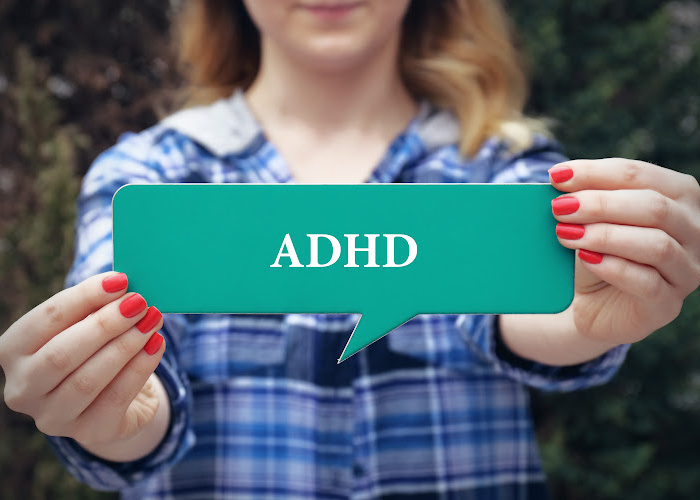It's crucial to know that students with autism and ADHD need special study strategies. Autism…

Understanding Vocal Stimming in ADHD Patients
For many individuals navigating the daily challenges of ADHD, vocal stimming serves as an often misunderstood companion. Characterized by repetitive noises such as humming, verbal blurts, or the echoing of phrases, vocal stimming exists as a significant aspect of this condition. In our endeavor to cultivate a deeper understanding of vocal stimming in ADHD, it is essential to acknowledge these behaviors not solely as symptoms but as part of a wider sensory and regulatory framework that individuals with ADHD experience.
While it may raise curiosity or concern among those unfamiliar, those who experience it know vocal stimming as a comforting ritual that provides relief and focus amidst the sensory overload that can come with ADHD. This vocal stimming explanation aims to unravel the threads of misconception and shed light on the reasons, benefits, and potential methods for management. From the subtle tapping of a foot to the gentle hum that passes through lips, understanding vocal stimming symptoms is the first step towards embracing and effectively supporting the diverse needs of the ADHD community.

What is Vocal Stimming in ADHD?
Vocal stimming in ADHD is a fascinating and multifaceted aspect of how individuals with attention deficit hyperactivity disorder express their need for sensory feedback and emotional regulation. Despite its often misunderstood nature, vocal stimming serves an important function for many, aiding in focus and providing relief from sensory input that can often seem overwhelming.
Defining Vocal Stimming and Its Occurrence in ADHD
At its core, vocal stimming related to ADHD involves the production of sounds or words in a repetitive and sometimes rhythmic manner. It can take many forms, such as humming, quick verbal noises, the repetition of phrases, or even shrieking. Vocal stims in ADHD are more than just quirks; they’re unconscious strategies employed by the brain to cope with the vast array of vocal stimming causes like challenging sensory environments, managing emotional surges, or maintaining concentration amidst distractions. Individuals might not even realize they are engaging in these behaviors as they’ve naturally integrated them into their daily lives as mechanisms of self-regulation.
The Differences Between ADHD-Related Vocal Stims and Tics
While vocal stims in ADHD often resemble tics that are symptomatic of conditions like Tourette Syndrome (TS) or Tic disorders (TD), it’s important to recognize the differences. Vocal stims, unlike tics, are generally under a person’s control and can be initiated or stopped voluntarily. They often have a soothing or focusing effect for the individual, while tics are involuntary, sudden, and not typically associated with a sense of relief or pleasure. This distinction has significant implications when considering vocal stimming treatment options, as techniques like habit reversal training may be more effective in managing vocal stims than they are for tics.
Exploring the Role of Vocal Stims in Self-Regulation and Focus
In understanding what is vocal stimming ADHD, it becomes clear that these behaviors serve crucial roles in helping individuals manage their symptoms. Vocal stims can be an essential form of self-regulation, allowing a person with ADHD to find stability in their sensory experience and to harness their own vocalizations as a means to increase concentration. They are especially useful when facing vocal stimming causes like prolonged boredom during monotonous tasks, stressful situations that put a strain on self-regulation, or managing restlessness.
By identifying personal triggers, those with ADHD can develop strategies for coping with vocal stimming ADHD, such as scheduled breaks, sensory diets, or targeted therapy. Treatment options often include medication or behavioral modifications aimed at supporting the individual’s unique needs while reducing the potential for vocal stims to become disruptive in everyday activities.
For those learning how to manage vocal stimming in ADHD, it’s important to emphasize holistic approaches that consider a person’s environment, emotional triggers, and cognitive patterns. Acknowledging vocal stimming as a natural response to the ADHD experience paves the way for not only understanding but also compassionately addressing these behaviors.

Identifying Triggers and Management Strategies
When it comes to managing vocal stimming in ADHD, understanding what sparks this behavior is vital. Various situations can lead to vocal stimming with specific vocal stimming causes including emotional stressors and environmental factors that individuals with ADHD may find challenging. Pinpointing these triggers is the initial step towards developing strategies for better control and relief.
Here are some commonly identified triggers and management strategies:
- Boredom: Lack of stimulation can prompt an individual to engage in vocal stimming as a means to stay alert.
- Sensory Overload: An environment that is too busy or noisy may lead to stimming as a coping mechanism to moderate sensory input.
- Feelings of Anxiety or Excitement: Intense emotions sometimes result in vocal stimming as a form of self-soothing or energy release.
Recognizing these triggers allows for the formulation of tailored vocal stimming treatment options. Some individuals may benefit from:
- Improving sleep quality which can have a calming effect on the nervous system and decrease the need for stimming.
- Incorporating regular physical activity to provide a healthy outlet for excess energy that might otherwise be channeled into vocal stimming.
- Practicing proactive self-advocacy to ensure understanding and support in both personal and professional environments.
- Exploring behavioral therapies and habit reversal training to replace vocal stimming with less intrusive behaviors.
- Considering medication, under professional guidance, which can alleviate some of the symptoms that lead to stimming.
It’s not just about curbing the stimming itself, but about creating an environment and lifestyle conducive to reducing the frequency and impact of vocal stimming on daily life. With the right combination of strategies, individuals with ADHD can steer their focus and energy positively, minimizing the disruption caused by vocal stimming.
Ultimately, each person’s journey with ADHD and vocal stimming is unique. Personalized adjustments and interventions are key in successfully managing vocal stimming in ADHD.

Conclusion
Vocal stimming, with its varied expressions and impacts, consistently plays a pivotal role in the lives of those with ADHD. It can manifest as an avenue for self-regulation, aiding in concentration and emotional equilibrium. Despite this, recognizing the impact of vocal stimming on daily life is crucial. When the line blurs between helpful stimming and that which interrupts daily activities or causes social discomfort, it’s essential to both understand and manage these vocal stimming symptoms.
Recognizing the Impact of Vocal Stimming on Daily Life
The presence of vocal stimming can be conspicuous in academic, professional, and personal settings, influencing the dynamics of interaction and the perception of productivity. An awareness and understanding of vocal stimming in ADHD patients is key. This not only fosters a supportive environment but also provides a foundation for exploring vocal stimming treatment options that can manage its intensity without stifling the individual’s natural coping mechanisms.
When and How to Seek Professional Assistance
Signs that professional assistance is needed typically surface when vocal stimming causes more harm than relief, or significantly infringes upon everyday functioning. A range of interventions, from medications that align dopamine levels to behavioral therapies designed for coping with vocal stimming ADHD, could be considered. Engaging with healthcare providers and exploring management strategies like executive function coaching ensures person-specific treatment that respects individual needs and circumstances.
Embracing Vocal Stimming as a Part of Living with ADHD
For individuals with ADHD, vocal stimming can be a profound part of their neurodiverse identity, offering solace and facilitation in navigating a world often overwhelming in sensory and emotional stimuli. By embracing it, people with ADHD can shepherd a pathway to empowerment and self-acceptance. However, through apt management strategies, the need for stimming and its influence on daily life can be harmonized, allowing each individual to thrive authentically without compromise to their well-being or their interactions with the world around them.
FAQs
What is vocal stimming in ADHD?
Vocal stimming in ADHD involves making repetitive sounds. This can include humming, making verbal noises, or repeating words and phrases. It’s a self-stimulatory behavior that’s common in individuals with ADHD, often serving as a coping mechanism to manage feelings or stay focused.
How does vocal stimming differ from tics?
Vocal stimming is a conscious behavior that individuals with ADHD use for self-regulation and is usually within their control. It can provide a soothing or focusing effect. On the other hand, tics are involuntary, not controlled, and are typical of conditions like Tourette Syndrome rather than ADHD.
Why do people with ADHD engage in vocal stimming?
Individuals with ADHD may engage in vocal stimming as a way to cope with the challenges associated with their condition. This includes difficulties in executive functioning, hypersensitivity to sensory input, and managing emotions. Vocal stims can help them concentrate, soothe restlessness, or navigate overwhelming sensory environments.
What are some triggers of vocal stimming in individuals with ADHD?
Common triggers for vocal stimming include boredom, sensory overload, high-stress situations, and feelings of anxiety or excitement. Recognizing these triggers is essential for developing strategies to manage vocal stimming.
How can vocal stimming be managed in individuals with ADHD?
Vocal stimming can be managed through strategies such as behavioral therapy, habit reversal training, and, in some cases, medication. Lifestyle changes that promote regular sleep patterns, physical exercise, and stress-reduction techniques can also be helpful. Tailored approaches depend on individual circumstances and the degree to which vocal stimming affects day-to-day life.
When should professional assistance be sought for vocal stimming?
Professional assistance should be sought if vocal stimming starts causing significant disruption in daily activities or social settings, or if it becomes a source of personal distress. A healthcare provider can offer guidance through interventions tailored to specific needs.
How can embracing vocal stimming be beneficial for individuals with ADHD?
Embracing vocal stimming can lead to greater self-acceptance for individuals with ADHD. When managed effectively, vocal stimming does not have to be a barrier to living a full and productive life. It can remain a part of an individual’s coping toolkit, allowing them to thrive while maintaining their unique neurodivergent identity.



This Post Has 0 Comments